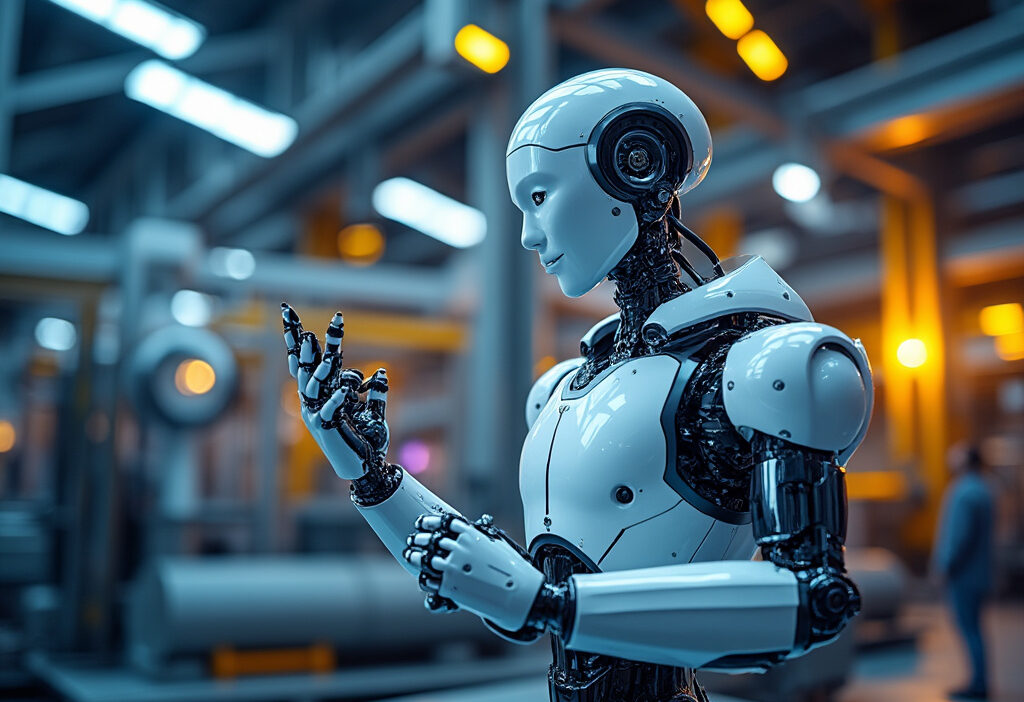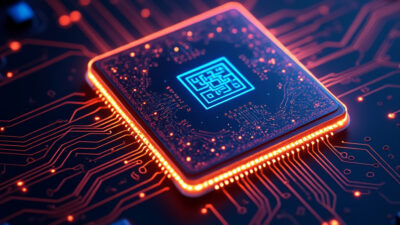Polyfunctional Robots The Next Generation of Collaborative Automation
In the rapidly evolving world of automation, polyfunctional robots emerge as a groundbreaking advancement, blending versatility with collaborative efficiency. These robots are redefining industries by performing multiple tasks with unprecedented adaptability. This article delves into their development, applications, and the transformative potential they hold for the future of work and production.
The Evolution of Robotics
The evolution of robotics has been marked by a steady shift from rigid, single-purpose machines to highly adaptable, polyfunctional systems capable of dynamic collaboration. Early industrial robots were designed for repetitive, high-precision tasks—welding, painting, or assembly—but lacked the flexibility to adapt to new roles without extensive reprogramming or hardware changes. The breakthrough came with advancements in artificial intelligence, which enabled robots to process real-time data, learn from interactions, and make autonomous decisions. Machine learning algorithms transformed static automation into intelligent systems capable of handling variability in tasks and environments.
Another pivotal development was modular design, allowing robots to be reconfigured for different functions with minimal downtime. Swappable end-effectors, adjustable grippers, and plug-and-play software modules made it possible for a single robot to switch between tasks like material handling, quality inspection, and even complex assembly—all within the same workflow. Sensor fusion, combining vision systems, LiDAR, and force feedback, further enhanced situational awareness, enabling robots to operate safely alongside humans in shared workspaces.
The integration of cloud computing and IoT connectivity expanded capabilities beyond individual units, creating networked robotic ecosystems where machines share data and optimize performance collectively. This shift from isolated automation to collaborative intelligence laid the foundation for today’s polyfunctional robots, which blur the line between specialized tools and versatile partners. As these technologies mature, the next frontier lies in seamless human-robot symbiosis, where adaptability and multi-tasking redefine productivity in collaborative environments.
Defining Polyfunctional Robots
Polyfunctional robots represent a paradigm shift in automation, moving beyond the rigid, single-purpose machines of the past. Unlike traditional robots, which excel in repetitive, high-precision tasks but lack flexibility, polyfunctional robots are defined by their adaptability, multi-tasking capabilities, and collaborative intelligence. These traits enable them to operate in dynamic environments alongside humans, seamlessly switching roles as needed.
At their core, polyfunctional robots are designed to handle diverse tasks without requiring extensive reprogramming or hardware changes. This is made possible by modular architectures, where components like grippers, sensors, or tools can be swapped or reconfigured on the fly. For example, a single robot might assemble components in a factory in the morning, then transition to quality inspection in the afternoon—all while learning from its interactions.
Another defining feature is their ability to collaborate safely and intuitively with human workers. Advanced sensor fusion allows these robots to perceive their surroundings in real-time, adjusting their movements to avoid collisions or even anticipate human actions. Combined with AI-driven decision-making, they can interpret verbal commands, gestures, or contextual cues, making them true partners rather than isolated machines.
Perhaps most importantly, polyfunctional robots are built for continuous improvement. Unlike their predecessors, which followed static programming, these systems leverage machine learning to refine their performance over time. Whether optimizing workflows, adapting to new materials, or troubleshooting errors autonomously, they embody a new era of robotics where versatility and intelligence converge. This sets the stage for the next chapter, where we’ll explore the technologies that make such capabilities possible.
Core Technologies Behind Polyfunctional Robots
The versatility of polyfunctional robots is made possible by a sophisticated convergence of cutting-edge technologies. At their core, these robots rely on artificial intelligence (AI) and machine learning (ML) to process vast amounts of data in real time, enabling them to adapt to dynamic environments. Unlike traditional robots that follow rigid programming, polyfunctional robots use reinforcement learning and neural networks to refine their actions based on feedback, improving performance over time.
Sensor fusion is another critical component, integrating inputs from LiDAR, cameras, force-torque sensors, and tactile feedback systems. This multi-sensory approach allows robots to perceive their surroundings with high precision, ensuring safe and efficient collaboration with humans. For example, combining vision and force data enables a robot to handle delicate objects without damage or adjust its grip in response to unexpected resistance.
Advanced robotics frameworks, such as ROS 2 (Robot Operating System), provide the backbone for seamless integration of these technologies. These frameworks support modular software development, allowing polyfunctional robots to switch tasks effortlessly—from assembly to quality inspection—without requiring extensive reprogramming. Additionally, edge computing reduces latency by processing data locally, ensuring rapid decision-making in time-sensitive applications.
The synergy of these technologies unlocks unprecedented flexibility. AI-driven adaptability, multi-modal sensing, and scalable software architectures work in concert to make polyfunctional robots not just tools, but intelligent partners in collaborative environments. As these technologies continue to evolve, the boundaries of what these robots can achieve will expand, setting the stage for their transformative impact across industries—as explored in the next chapter on manufacturing applications.
Applications in Manufacturing
Polyfunctional robots are transforming manufacturing by combining adaptability, precision, and collaborative intelligence to streamline complex workflows. In the automotive industry, these robots handle tasks ranging from welding and painting to assembly and quality inspection—all within a single system. For instance, a single polyfunctional robot can switch between assembling door panels and performing real-time defect detection using integrated vision systems, reducing downtime and reconfiguration costs. This flexibility is critical in an industry where production lines frequently adapt to new vehicle models.
In electronics manufacturing, the demand for miniaturization and rapid product cycles makes polyfunctional robots indispensable. They excel in delicate operations like PCB assembly, where precision and speed are paramount. Equipped with force-sensitive grippers and AI-driven error correction, these robots can place micro-components with sub-millimeter accuracy while adapting to design changes on the fly. Companies like Foxconn and Samsung are leveraging such systems to reduce defects by over 30% while cutting production lead times.
Beyond traditional sectors, polyfunctional robots are enabling agile, small-batch production. Customizable robotic cells can reconfigure themselves for different tasks—milling, 3D printing, or packaging—without manual intervention. This is particularly valuable for industries like aerospace, where low-volume, high-mix production is common. By integrating IoT connectivity, these robots also feed real-time data into digital twins, optimizing processes dynamically.
The efficiency gains are undeniable, but the true breakthrough lies in seamless human-robot collaboration. Unlike rigid, single-purpose automation, polyfunctional robots work alongside humans, learning from their inputs and adjusting behaviors to enhance productivity. This synergy sets the stage for the next evolution in manufacturing—where adaptability and collaboration redefine industrial efficiency.
Impact on the Workforce
The rise of polyfunctional robots in collaborative environments is reshaping the workforce, demanding a fundamental shift in how humans interact with automation. Unlike traditional industrial robots, which operate in isolation, these advanced systems work alongside humans, creating a symbiotic relationship that enhances productivity while redefining job roles.
One of the most significant implications is the transition from repetitive, manual tasks to more cognitive and supervisory roles. Workers are no longer just operators but collaborators, overseeing robot performance, troubleshooting, and making real-time decisions. For example, in automotive assembly lines, technicians now focus on quality control and process optimization while robots handle precision welding or part placement. This shift necessitates a new skill set, including problem-solving, adaptability, and technical literacy.
Additionally, the demand for cross-disciplinary expertise is growing. Employees must understand robotics, data analytics, and human-machine interaction to thrive. Upskilling programs are becoming essential, as workers need to learn programming basics, AI fundamentals, and safety protocols for collaborative workspaces. Companies investing in continuous training will see higher retention and smoother integration of these technologies.
However, concerns about job displacement persist. While some roles may diminish, new opportunities in robot maintenance, system design, and human-robot coordination are emerging. The key lies in proactive workforce planning—ensuring employees are equipped to transition into these evolving roles.
As polyfunctional robots become more prevalent, the workforce must embrace lifelong learning and adaptability. The future belongs to those who can seamlessly collaborate with automation, leveraging its strengths while complementing it with human ingenuity.
Challenges in Development
Developing polyfunctional robots capable of seamless collaboration with humans presents a multitude of challenges, spanning technical, operational, and systemic hurdles. One of the most pressing issues is the complexity of multi-task adaptability. Unlike specialized robots designed for repetitive tasks, polyfunctional robots must dynamically switch between functions, requiring advanced AI, real-time decision-making, and flexible mechanical design. Ensuring precision across diverse tasks—from assembly to logistics—demands sophisticated sensor fusion and adaptive control algorithms, which are still in nascent stages of development.
Another critical challenge is integration with legacy systems. Many industries operate on decades-old infrastructure, and retrofitting these environments to accommodate polyfunctional robots involves significant compatibility issues. Standardizing communication protocols between robots and existing machinery—such as PLCs or ERP systems—requires extensive customization, often leading to high implementation costs and prolonged downtime.
Safety remains a paramount concern. Collaborative robots must operate in close proximity to humans, necessitating fail-safe mechanisms to prevent accidents. While force-limiting technologies and vision-based safety systems exist, scaling these for polyfunctional applications introduces new risks. For instance, a robot transitioning from welding to material handling must instantly recalibrate its safety parameters, a feature that current norms like ISO/TS 15066 don’t fully address.
Lastly, scalability and maintenance pose operational challenges. Polyfunctional robots require modular designs to allow for easy upgrades, but this increases mechanical and software complexity. Predictive maintenance becomes harder as wear and tear vary across functions, demanding advanced diagnostics. Overcoming these barriers will be crucial to unlocking the potential highlighted in upcoming case studies, where successful implementations demonstrate transformative outcomes.
Case Studies of Success
Polyfunctional robots are already proving their worth in real-world applications, delivering measurable improvements in efficiency, flexibility, and cost savings. One standout example is BMW’s use of collaborative robots (cobots) in automotive assembly lines. These robots perform tasks ranging from precision welding to component handling, adapting to different workflows without reprogramming. By integrating vision systems and AI, they reduced cycle times by 15% while maintaining defect rates below 0.5%, a critical metric in high-volume manufacturing.
Another success story comes from Amazon’s fulfillment centers, where polyfunctional robots work alongside human employees to sort, pack, and transport goods. These robots leverage machine learning to optimize pathfinding and load balancing, increasing warehouse throughput by 20% while reducing human fatigue-related errors. The flexibility of these systems allows Amazon to redeploy them seasonally, handling peak demand without additional hires.
In healthcare, the da Vinci Surgical System exemplifies polyfunctionality by combining precision surgery with real-time data analytics. Surgeons use its modular arms for everything from suturing to tumor removal, supported by AI-driven diagnostics. Hospitals report 30% shorter recovery times and lower complication rates compared to traditional methods.
Lastly, ABB’s YuMi robot has transformed small-batch manufacturing by switching between electronics assembly, testing, and packaging. A European electronics firm reported a 40% reduction in setup time and a 25% increase in production agility, crucial for custom orders. These case studies underscore how polyfunctional robots overcome past integration hurdles—discussed earlier—by delivering tangible, scalable benefits. As we look ahead, their role will only expand, bridging the gap between current capabilities and future innovations in robotics.
Future Trends in Robotics
The rapid evolution of polyfunctional robotics is poised to redefine collaborative automation, driven by advancements in artificial intelligence, materials science, and human-robot interaction. As these robots become more adaptable, their future applications will expand beyond today’s industrial and logistical use cases, permeating sectors like healthcare, agriculture, and even domestic environments.
One key trend is the integration of AI-driven autonomy, enabling robots to dynamically switch roles without explicit reprogramming. For instance, a single robot in a warehouse might transition from sorting packages to performing quality checks, leveraging real-time data to optimize workflows. Emerging neuromorphic computing could further enhance this adaptability, allowing robots to process sensory inputs with human-like efficiency.
Another breakthrough lies in soft robotics, where flexible, biomimetic materials enable safer interactions in unpredictable environments. Imagine agricultural robots that delicately harvest fruits while avoiding damage or medical assistants that adapt their grip to handle fragile instruments. Coupled with advancements in haptic feedback, these robots will achieve unprecedented precision in collaborative tasks.
The rise of swarm robotics will also amplify polyfunctionality, with fleets of smaller robots working in unison to tackle complex projects—from construction to disaster relief. These systems will self-organize, sharing data to optimize performance dynamically. Meanwhile, quantum computing could unlock new frontiers in robot decision-making, enabling near-instantaneous problem-solving for large-scale deployments.
As these technologies mature, ethical and societal implications will emerge—a natural segue into the next chapter. However, the potential for polyfunctional robots to augment human capabilities, rather than replace them, remains a guiding principle for innovation. The future hinges on seamless collaboration, where robots and humans co-evolve in shared spaces.
Ethical Considerations
As polyfunctional robots become integral to collaborative environments, ethical considerations must be addressed to ensure their deployment benefits society without unintended harm. One pressing concern is job displacement, as these robots, capable of performing multiple tasks with high efficiency, may replace human roles in manufacturing, logistics, and even service sectors. While automation historically creates new jobs, the transition period can be disruptive, particularly for low-skilled workers. Policymakers and industries must prioritize reskilling programs and social safety nets to mitigate economic inequalities.
Another ethical dimension lies in the responsibility of developers. As polyfunctional robots operate alongside humans, their design must prioritize safety, transparency, and accountability. Developers must ensure these robots adhere to strict ethical guidelines, such as avoiding biased decision-making algorithms or unintended harmful behaviors. For instance, a robot designed for healthcare collaboration must respect patient privacy and autonomy, while one deployed in public spaces should avoid reinforcing societal biases.
The question of autonomy versus control also arises. While polyfunctional robots can adapt to dynamic environments, excessive autonomy without human oversight risks unintended consequences. Striking a balance between independent operation and human supervision is critical, particularly in high-stakes fields like emergency response or elder care.
Finally, the environmental impact of producing and maintaining these advanced systems must be considered. Sustainable design practices and end-of-life recycling plans should be integrated into development cycles to minimize ecological harm. Ethical robotics isn’t just about avoiding harm—it’s about actively shaping technology to foster equitable, safe, and sustainable collaboration between humans and machines.
Preparing for a Collaborative Future
As industries increasingly integrate polyfunctional robots into collaborative environments, preparing for this shift requires proactive adaptation across education, policy, and innovation. The transition demands a workforce equipped with new skills, regulatory frameworks that ensure safe and equitable deployment, and continuous technological advancements to maximize benefits.
Education must evolve to bridge the gap between human and robotic collaboration. Traditional technical training should expand to include interdisciplinary skills like robotics programming, AI ethics, and human-robot interaction design. Upskilling programs can help current workers transition into supervisory or maintenance roles, while universities should integrate robotics literacy into broader curricula. Lifelong learning initiatives will be critical, as the rapid pace of automation necessitates continuous adaptation.
On the policy front, governments and organizations must establish guidelines that balance innovation with worker protections. Standards for robot safety, data privacy, and liability in shared workspaces are essential. Policymakers should also incentivize companies to adopt collaborative automation responsibly, ensuring job creation rather than displacement. Public-private partnerships can foster inclusive growth, particularly in sectors where automation risks exacerbating inequality.
Innovation must focus on enhancing the flexibility and adaptability of polyfunctional robots. Developers should prioritize intuitive interfaces that allow non-experts to interact seamlessly with robotic systems. Open-source platforms and modular designs can democratize access, enabling smaller enterprises to leverage automation. Additionally, research into human-centric robotics—where machines complement rather than replace human skills—will be key to sustainable integration.
By aligning education, policy, and innovation, industries and individuals can not only adapt to but thrive in a future shaped by collaborative automation. The goal is not just coexistence, but a symbiotic relationship where humans and robots amplify each other’s strengths.

Conclusions
As we stand on the brink of a new era in automation, polyfunctional robots offer a glimpse into a future where machines and humans collaborate more seamlessly than ever. Their development and integration present challenges but also unparalleled opportunities for efficiency, innovation, and growth. Embracing this change requires adaptation, but the potential rewards redefine what’s possible in automation.



